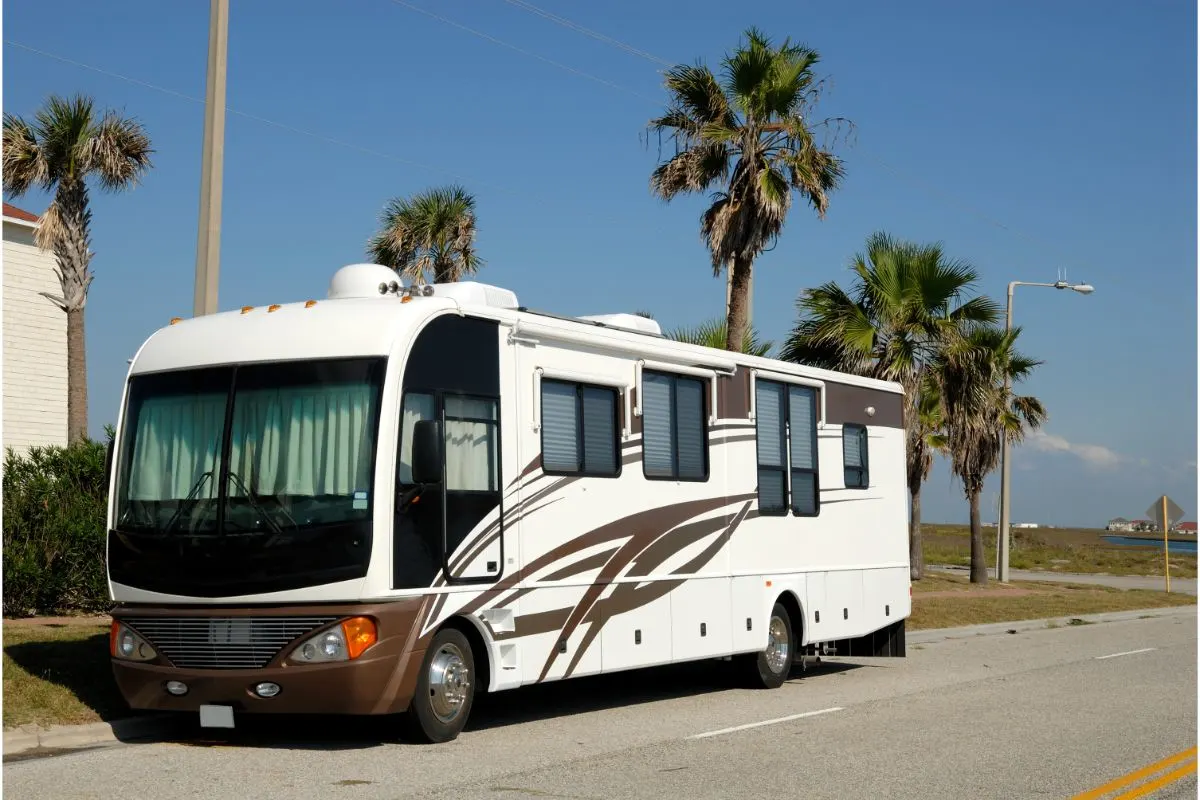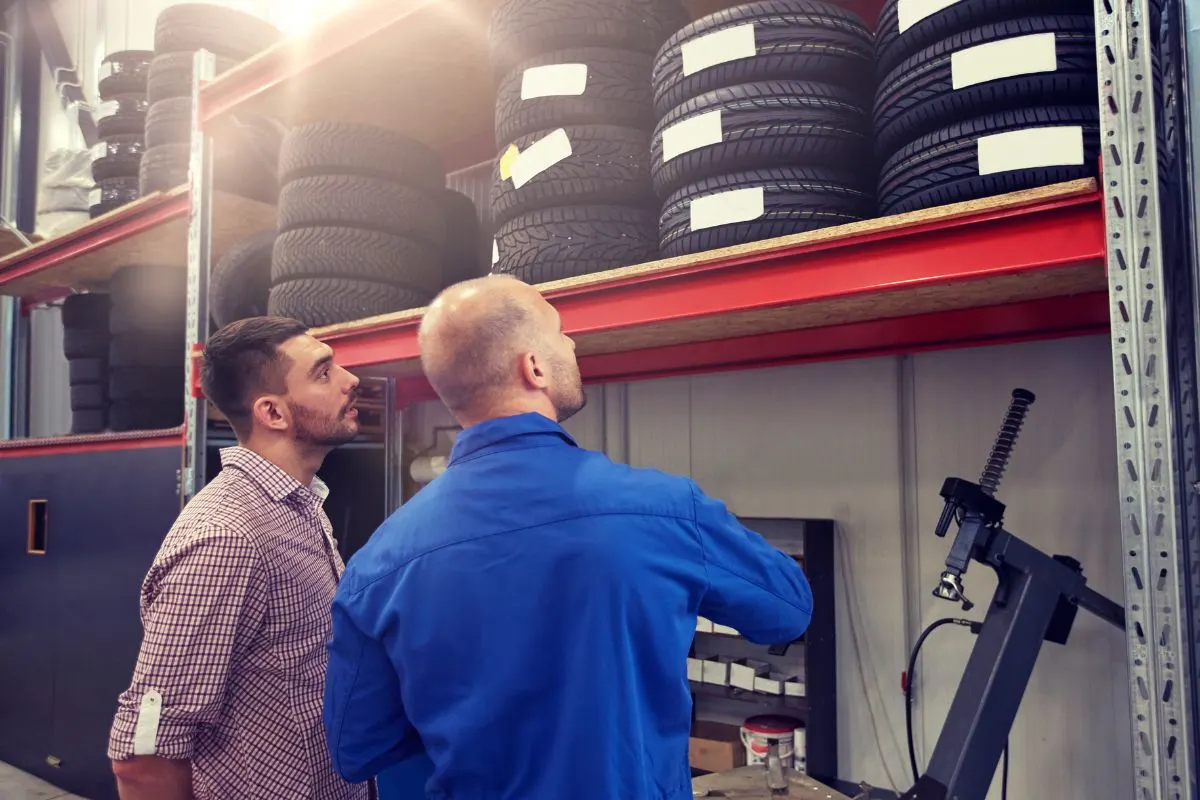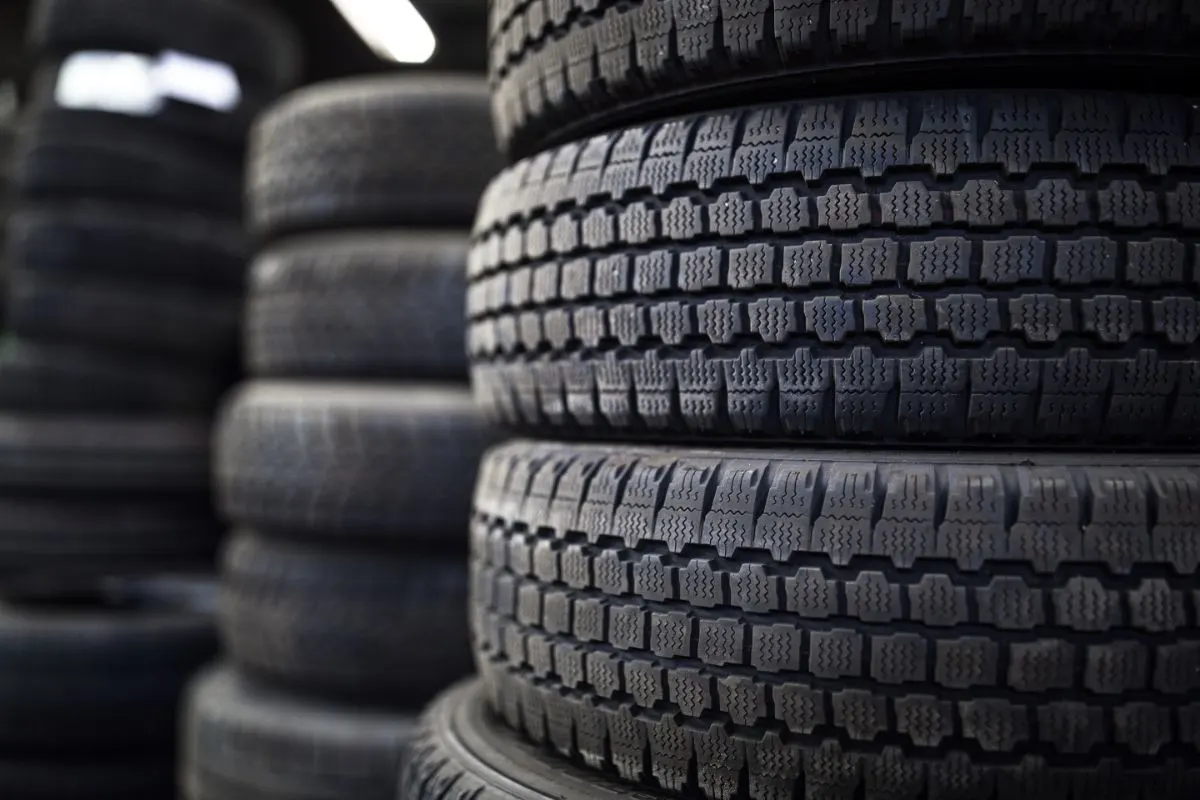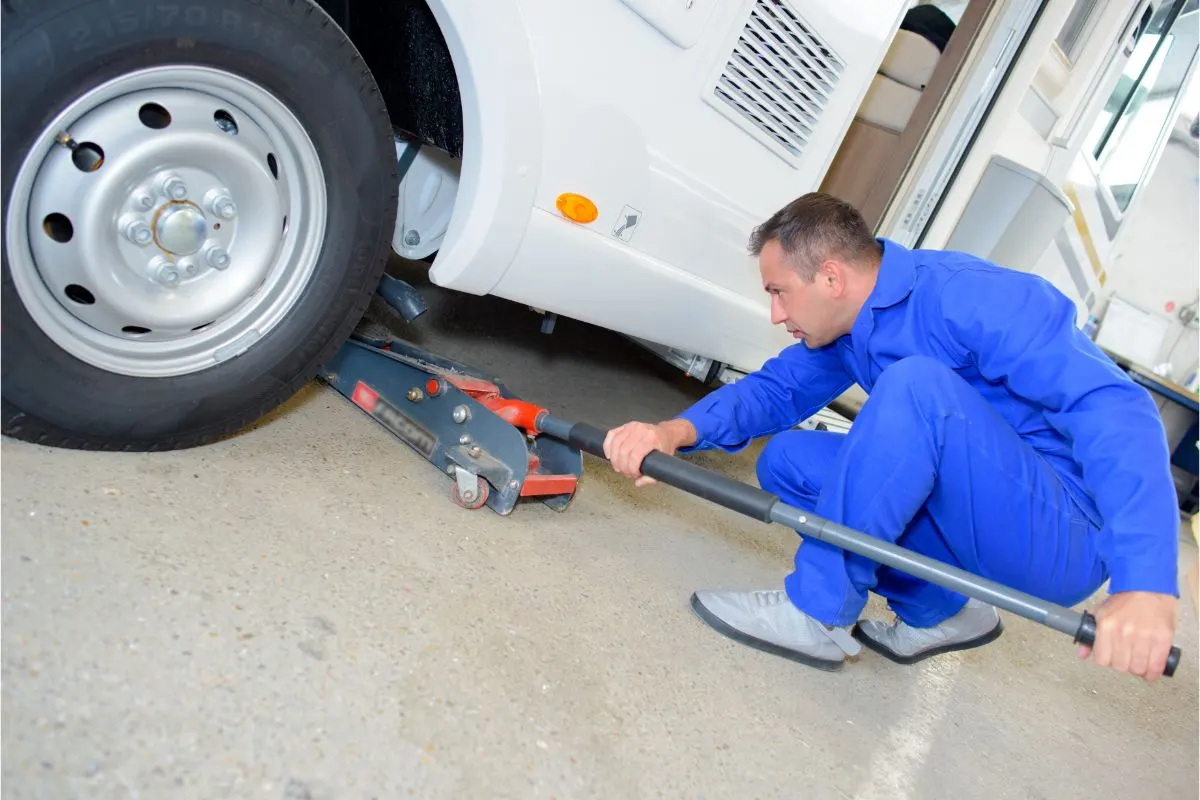
RV tires can last you anywhere between five and ten years or between 8,000 and 12,000 miles. However, that number depends on whether you utilize the rig frequently or if it sits most of the year. The manufacturer suggested changing time is your best bet and that is often five years, but could be as much as a decade.
We all love an adventure, but we also want to get to and from the excursion safely, not on the roadside calling road safety personnel for assistance. Tires can make or break a great RV trip, and they can cost you hundreds of dollars in unneeded maintenance.
Even if you plan, you never know what kind of driving conditions you’ll encounter, and when an RV tire fails, it’s generally while you’re on the road, rather than when you’re parked, and the consequences may be disastrous, to say the least.
Does a Blown RV Tire Happen Often?

Blown tires have been known to cause RV propane and electrical cables to be destroyed and the floors to be ripped apart. Moreover, a blown tire could result in a collision. A blow-out, on the other hand, can leave you trapped for many hours before assistance arrives.
To determine whether it’s time to change RV tires, it isn’t as simple as looking at the tread wear. With only a few thousand kilometers of driving per year, RV tires can be on for years without showing any signs of wear.
So, how often should RV tires be replaced? As it turns out, it’s more often than you’d have expected! To help you identify when it’s time to replace your RV tires, here are a few things to look for:
Every Tire Should Get Inspected
This means that you will need to inspect each tire visually for indicators of tire breakdown, including openings in the sidewalls, which can signal that a tire should be replaced.
Before and after every RV trip, it’s a good idea to inspect the tires.
Find Out the Age of Your Tires

You can also use the tire’s age as a tool to determine how often you should replace the tires on your RV. As of 2000, every tire has an identification code that includes both the week and the year it was made.
DOT codes begin with “DOT” and end with the week and year of manufacturing, and can be found on the tire by customers. Tires built in February of 2020 will have the DOT code “0820” at the end of their code. As a general rule, tires should be replaced every five years, regardless of how frequently the RV is used.
Each tire has a date code on the sidewall that tells you when it was made.
Tire Deterioration Causes
After five years, no matter how well-maintained or how deep the tread is, even the most well-maintained tires will need to be replaced due to wear from the elements and the passage of time.
Even if you live in a colder region, your RV tires may need to be replaced sooner because they are subjected to both heat and sunlight, which accelerates tire decomposition.
Tire Use and Storage

Tires that aren’t rotated regularly can develop problems over time. Additionally, as previously stated, RV tires that have been used infrequently fare less well than those that have been used regularly.
While the tread of a tire will wear down over time due to regular use, tires also deteriorate due to inactivity. As a result, the rubber composition is more fragile, and this can have a significant impact on the tires’ ability to last.
Form a buffer between the tires and the ground when storing them. During the storage time, lighten the RV’s overall load. It’s also a good idea to drive the RV a short distance every few days while it’s in storage to prevent the formation of cracks in the RV’s sidewalls.
Avoid storing spare tires on asphalt or other surfaces that absorb heat, such as concrete or wood. Keep your tires off the frozen ground in the winter by covering them with a tarp.
Tires should be checked for cracks and other damage on any RV that has been sitting for a while without being used. Move the RV forward a little so that the top and bottom of the tire can be checked as well.
Geographic and Climate Factors

Your RV’s tires take a beating depending on the climate and seasons of the states you’ll be visiting or passing through in your travel trailer. In hotter climes, ozone depletion and UV ray damage can be detrimental.
As a result of the sun’s drying effect on rubber, it is more susceptible to weather cracking than in temperate climates. This has the potential to drastically shorten the useful life of a tire.
Tires can be protected against weather cracking by not leaving the RV on hot tarmac and by covering the tires when remaining for an extended period. Winter tire protection is just as critical.
Air Pressure Levels
Be sure to follow the manufacturer’s recommendations for PSI tire pressure on the specific RV tire model. Keep your tires properly inflated at all times. Neither of these options has a positive outcome.
Tire pressure can fluctuate for several reasons, so be careful to check them frequently. Do it yourself at the side of the road with a portable tire pressure gauge.
RV tire performance can also be affected by factors such as the
- Improper distribution of weight and load
- A driver’s habits while driving
- The routes you take
- Age and Mileage
Pointers For Extending Tire Life
When a tire reaches the 5-year mark, it is recommended to replace it regardless of wear. However, there are some steps you can take to extend the life of your tires and ensure they at least reach the 5-year mark.
- Wash your tires with moderate soap and water to keep them clean.
- Inflate your tires to the maximum recommended cold pressure level.
- When not in use, cover the tires with a tire cover.
- When parked or stored for a long period, remove the weight from the tires.
- Stay clear of puddles since tires can soak up water.
- Alternately rotating tires when not being used
It’s always better to take a little bit of caution and replace damaged tires as soon as possible when it comes to the protection of you, the occupants, and even prospective renters.
A tire’s performance depends on a variety of materials and rubber compounds, all of which contribute to its overall performance. Component qualities are ever-changing in nature.
Determining the Service Life of a Tire

As mentioned earlier, many factors, including temperature, storage conditions, and the circumstances under which you use the tires (weight, velocity, inflation pressure, and upkeep) affect this evolution.
Therefore, the service life of a tire can’t be predicted with any precision because of the large variations in its service evaluation.
Because of this, it is advised that motorhome/RV tires, along with spare tires, be tested by a certified tire specialist.
They include a tire dealer, on a routine basis, to ensure that the tires are safe to use. Tires that have been around for five years open for at least should be inspected by a professional at least once every year.
Be Aware of Performance Changes With Your Tire
Be conscious of your tires’ visual appearance as well as inflation pressure, but also any shift in system efficiency like an increase in air release, noise, or shaking that could indicate that the tires should have been removed from service to avoid tire failure. It’s hard to know how long your tires will last just by looking at the date on the calendar.
It is more likely that an older tire will require replacement owing to service-related development or other issues discovered during inspection or detection during usage.
It is advised that any tires that have been in service for more than 10 years, even if they appear to be workable, be replaced by new tires as a basic precaution if they’ve not yet reached the authorized wear limit of the tire.
The manufacturer’s tire replacement recommendations for vehicles with original equipment tires (i.e., those purchased by the consumer on new vehicles) must be followed when replacing these tires (but not to exceed 10 years).

